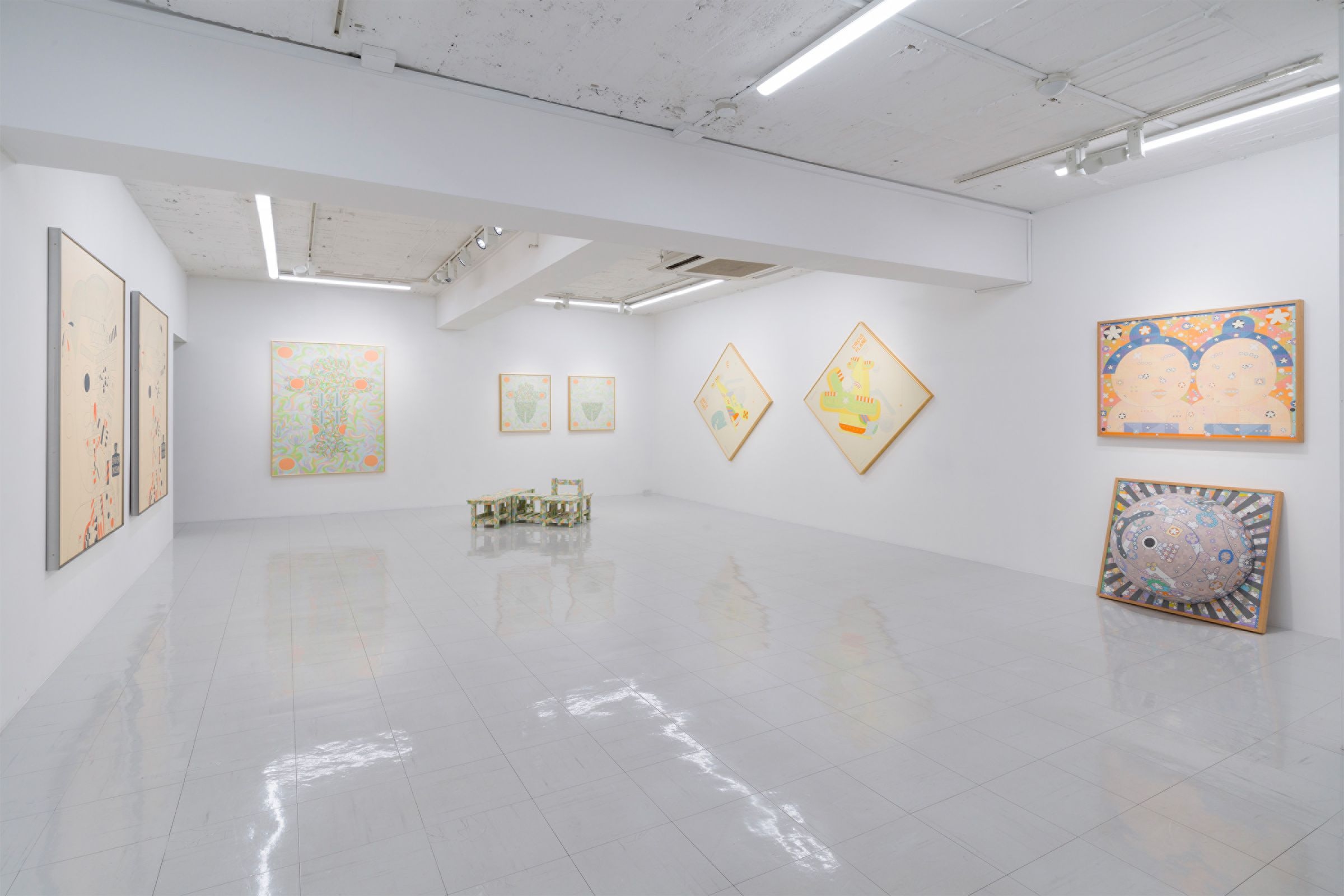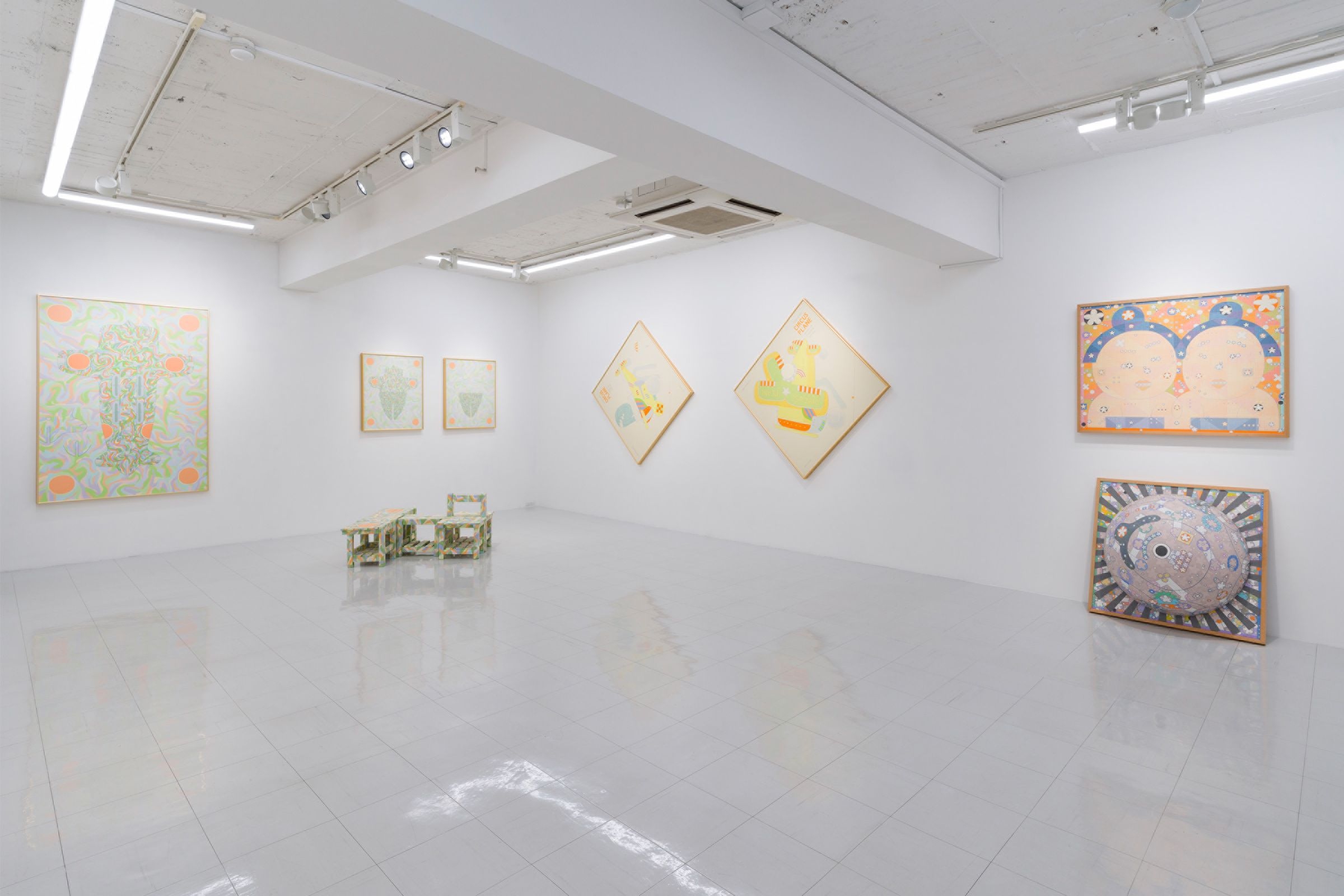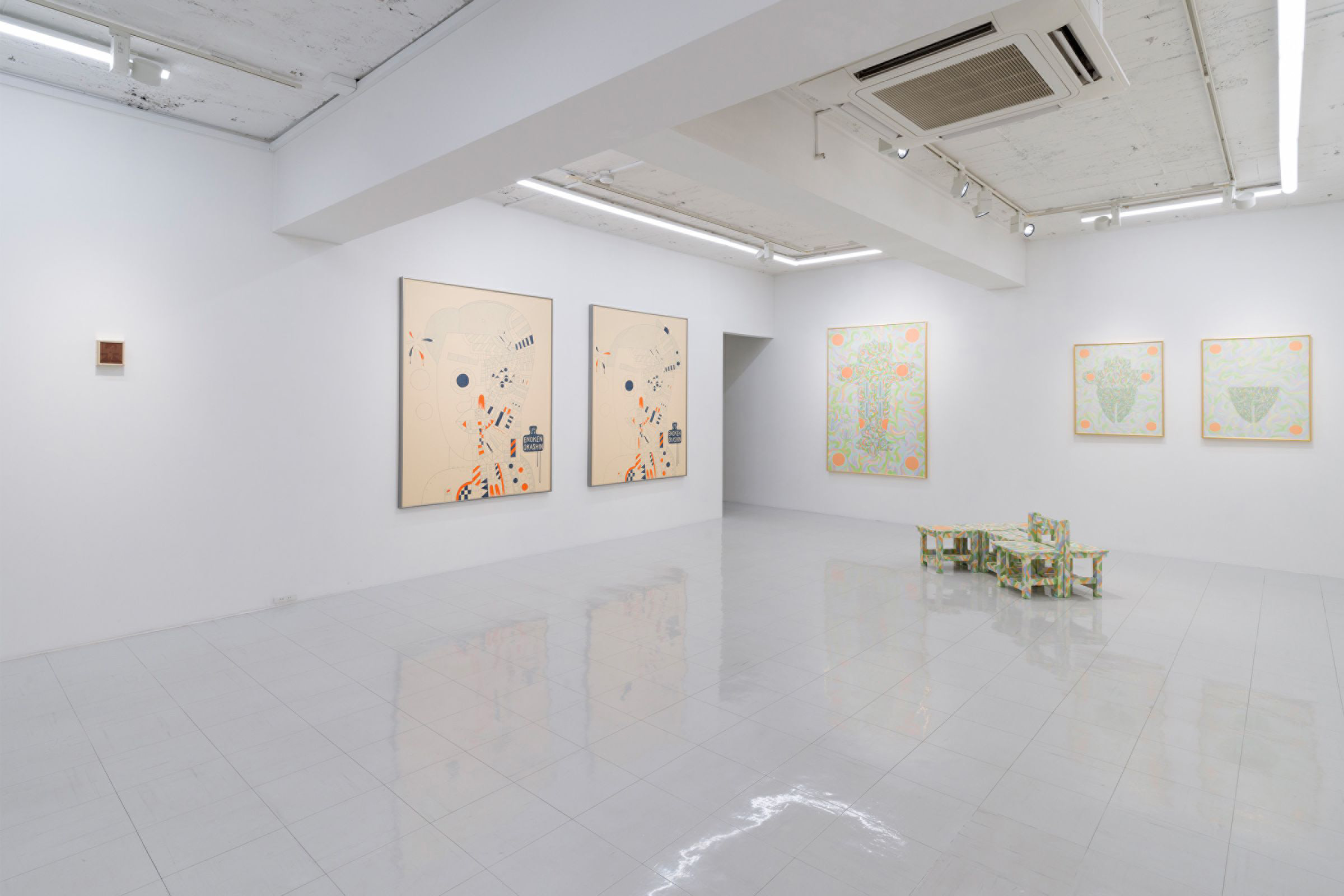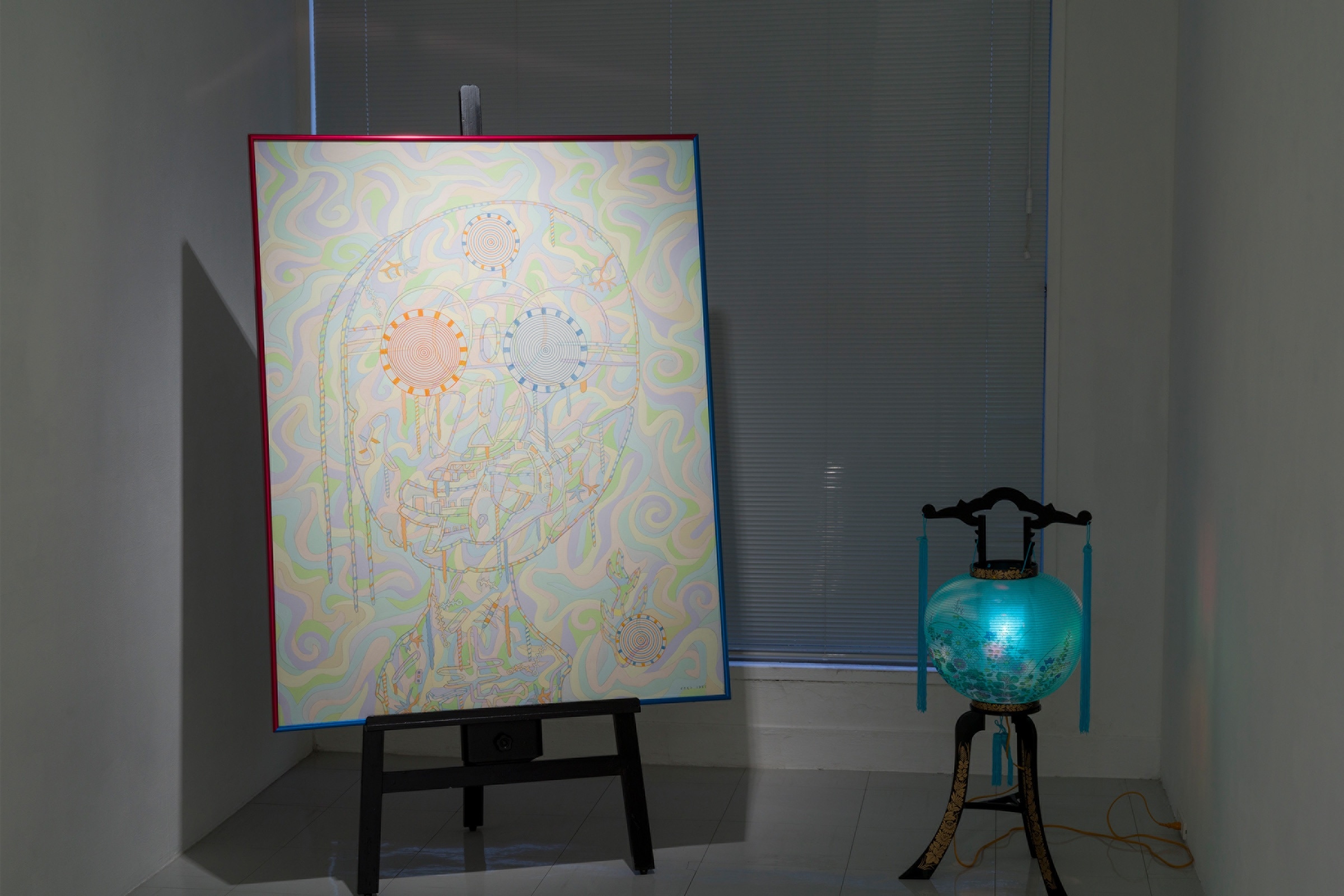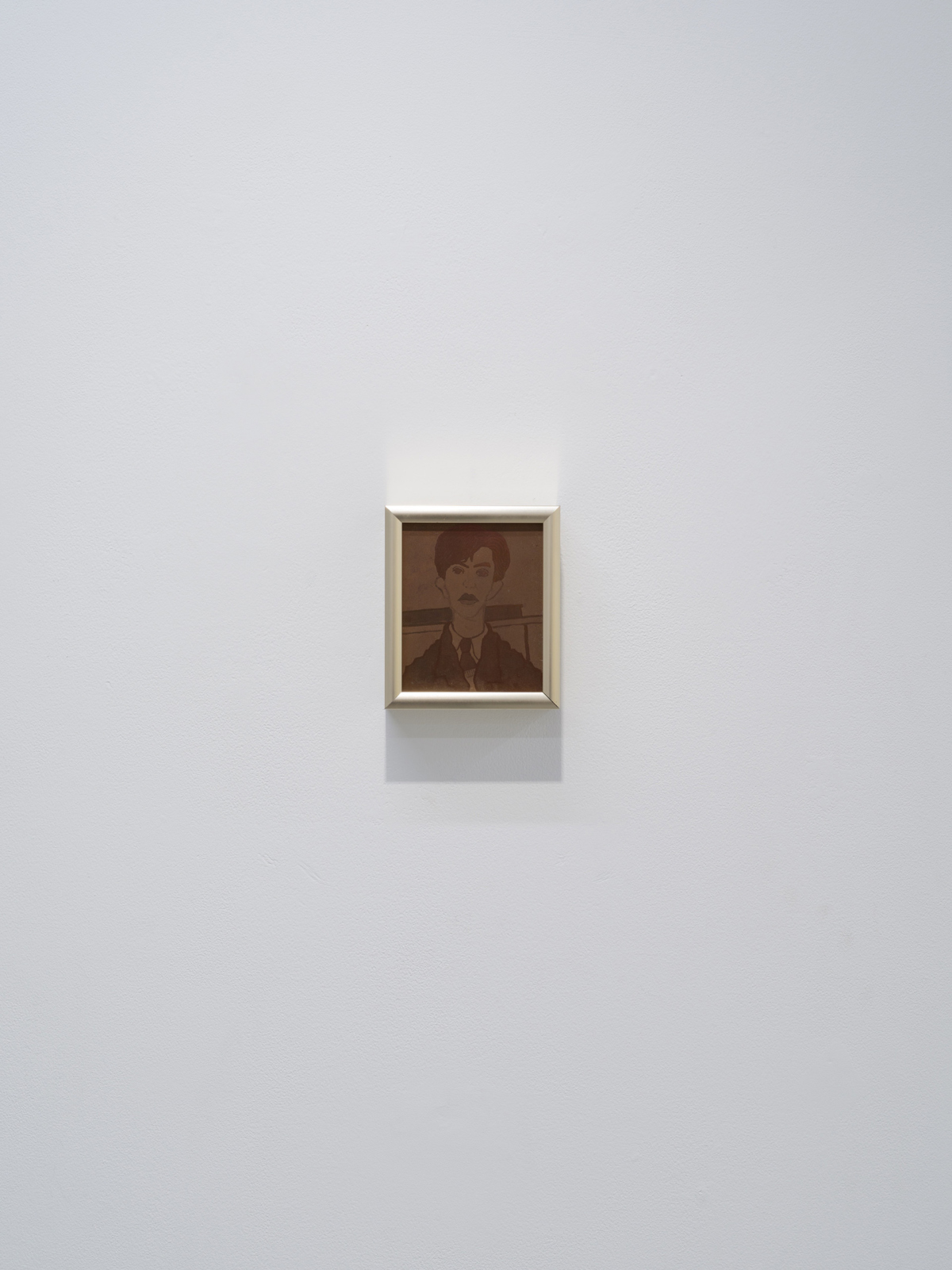Shinjiro Okamoto (1933-2020) taught himself watercolor painting after graduating from the Tokyo Metropolitan Nihonbashi High School. In the 1960s, he established a style of painting composed of simple lines and bright acrylic paint colors. In 1962 and 1964, he received honorable mentions at the Shell Art Awards and, in 1964, the grand prize at the inaugural Nagaoka Contemporary Art Museum Awards. Since then, he has participated in numerous exhibitions in and out of Japan, including the Tokyo Biennale and the Contemporary Art Exhibition of Japan. In recent years, he has received growing international acclaim as an artist presenting an aspect of post-war Japan, as exemplified by his inclusion in the International Pop, an exhibition that situated Pop Art within an international context (which toured the Walker Art Center, Dallas Museum of Art, and Philadephia Museum of Art). His first exhibition at Tokyo Gallery, The World of Insects: Or the Scenery of Swarm, was held in 1966. In addition, he also worked as an Art Director at Toppan Printing Co., Ltd. Until 1981, where he excelled for his work in the field of design.
During his long career, Okamoto developed many series in different styles. His subjects range from pre-war popular culture to art, religion, and history. The works are based on meticulous sketches, and dispassionate brush strokes create lively forms across the image. One of the most striking aspects of Okashin’s [an abbreviation of OKAmoto SHINjiro] world is the way in which a single image is recreated in different variations of color and size using techniques such as lithographs, silk-screen, three-dimensional painting, and sculptural objects. These proliferating images transform the exhibition space to an overwhelming spectacle. The upbeat and festive pictorial spaces do indeed entertain the viewers, but at the same time do not pander to them, presenting a calmness akin to an eye of a storm.
This exhibition features works from 1980 onwards. Works such as Chaplin Arrives in Japan (1984) based on Chaplin’s first visit to the country, Circus Plane (1983) using tin toys as the motif, and Zero Fighter Plane (1984) inspired by his childhood interest in fighter planes, all give unique expression to the environment the artist grew up in, characterized by a feverish upsurge and displaying of national pride. On the other hand, the humor that emerges in the works is rooted in social criticism; the lively images that reflect popular appeal are also accompanied by an objective and perceptive eye.
WORKS
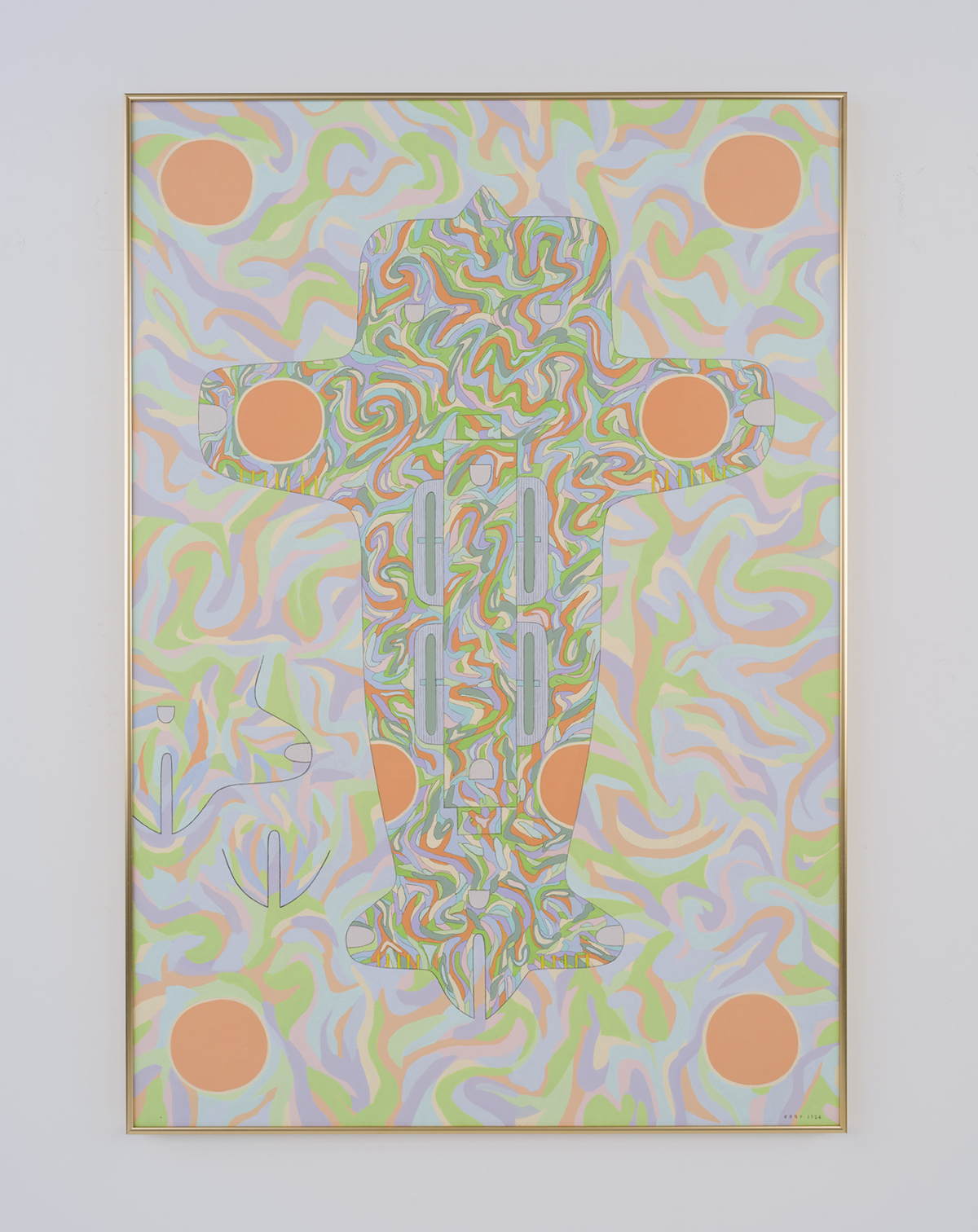
- Title
- Zero Fighter
- Year
- 1984
- Material
- Liquitex, canvas
- Size
- 162.5 x 112 cm
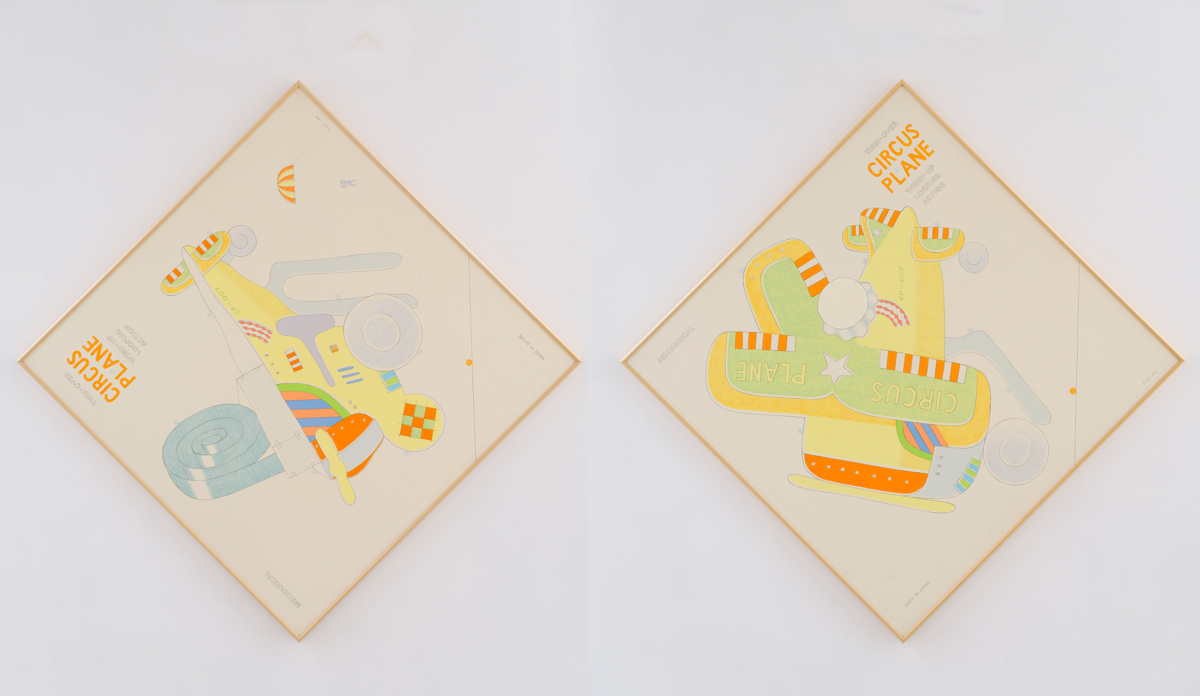
- Title
- Circus Plane
- Year
- 1983
- Material
- Liquitex, canvas
- Size
- 110 x 110 cm (set of 2)
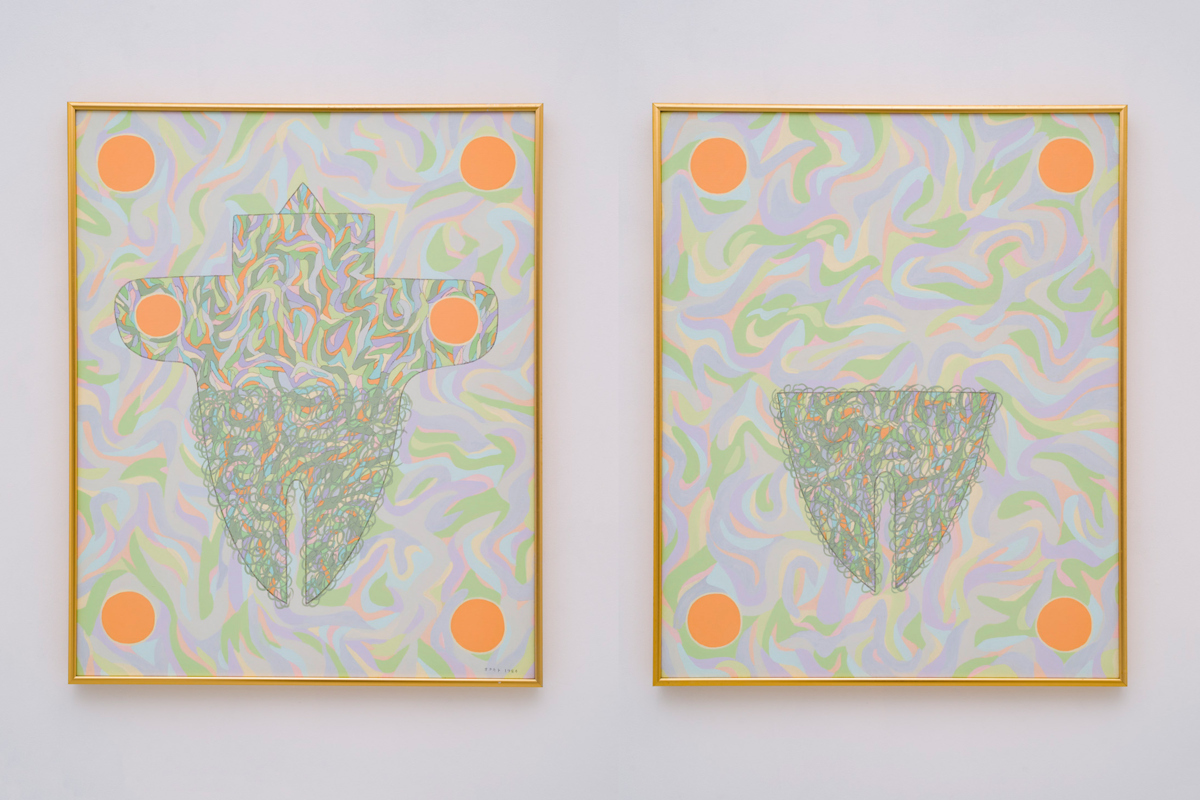
- Title
- Zero Fighter
- Year
- 1984
- Material
- Liquitex on canvas
- Size
- 80.3 × 65.2 cm (set of 2)
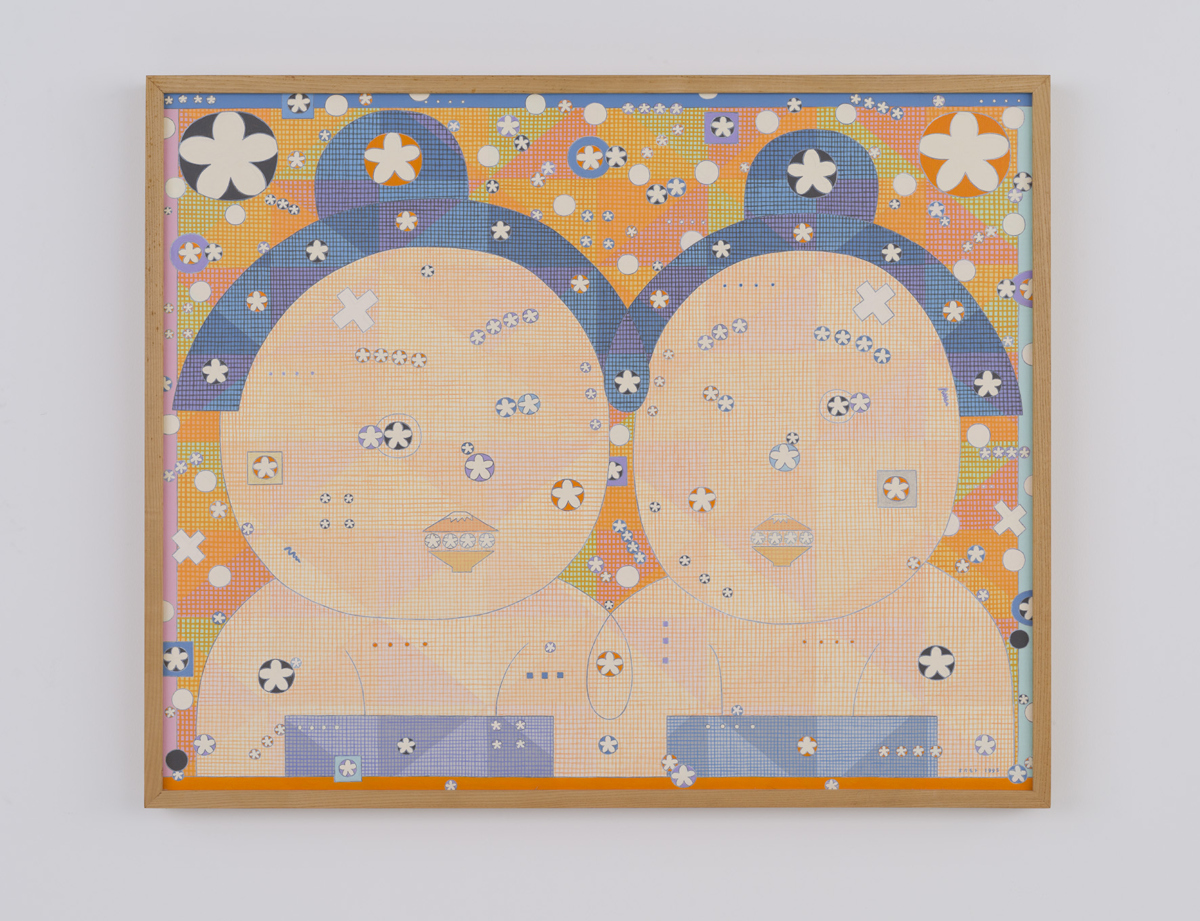
- Title
- Waka-Taka Brothers, Sumo Wrestlers of the Futagoyama Stable
- Year
- 1995
- Material
- Liquitex, canvas
- Size
- 80.3 x 100 cm
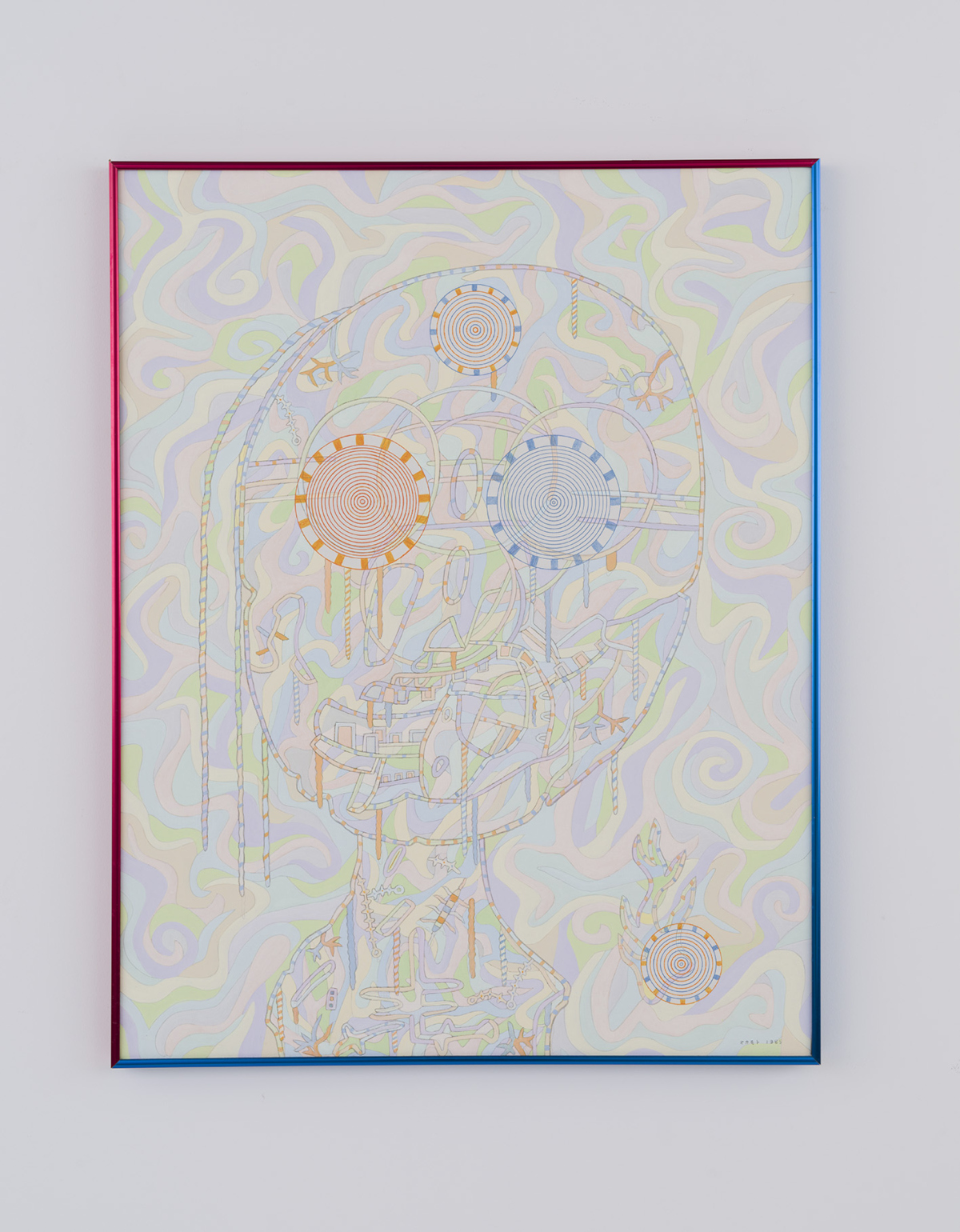
- Title
- Oiwa-san (Female Ghost from Yotsuya Kaidan)
- Year
- 1985
- Material
- Acrylic on canvas
- Size
- 116.7 x 91.0 cm
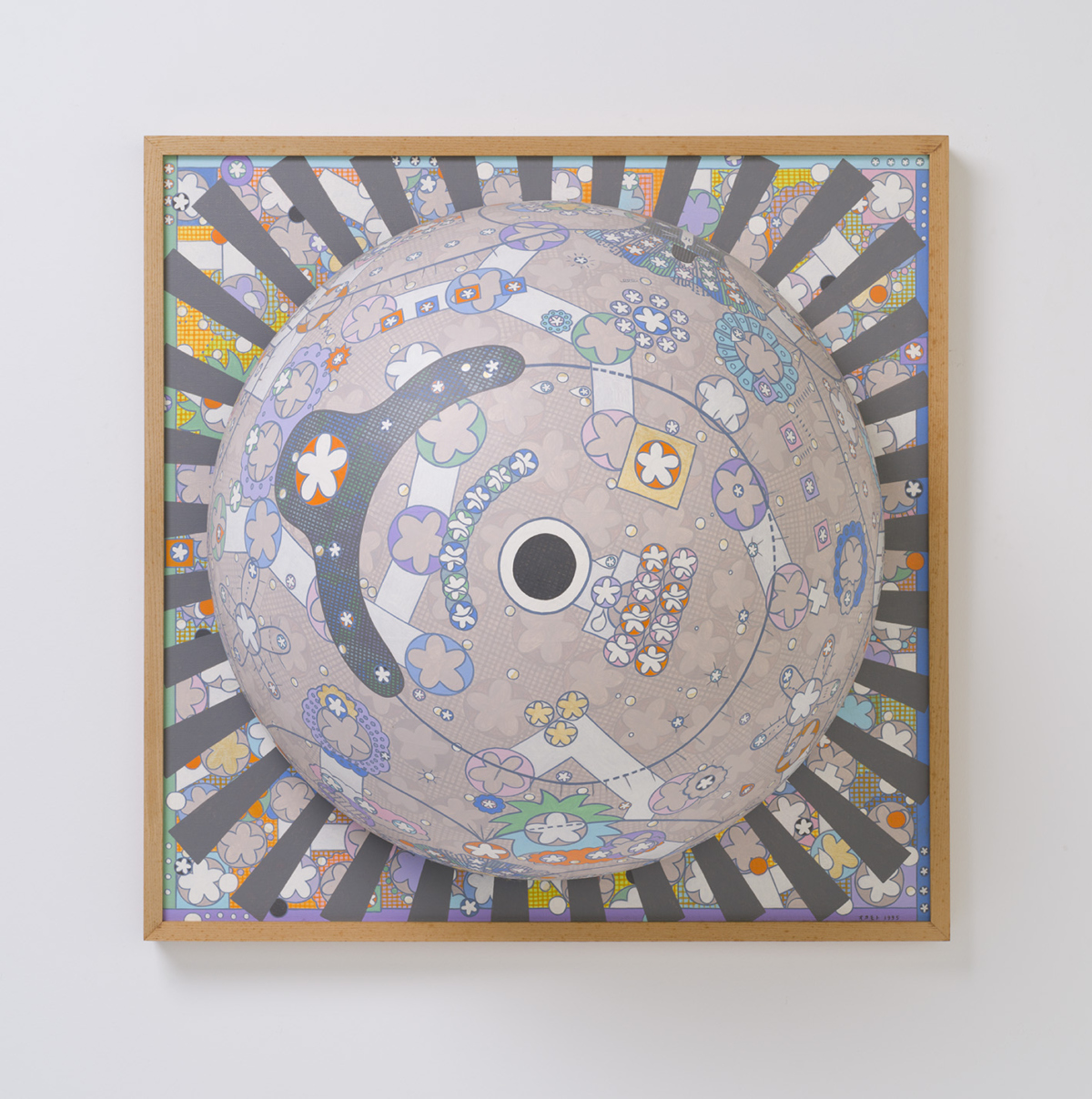
- Title
- Roly-Poly Konishiki
- Year
- 1995
- Material
- Liquitex, canvas
- Size
- 80.3 x 80.3 cm
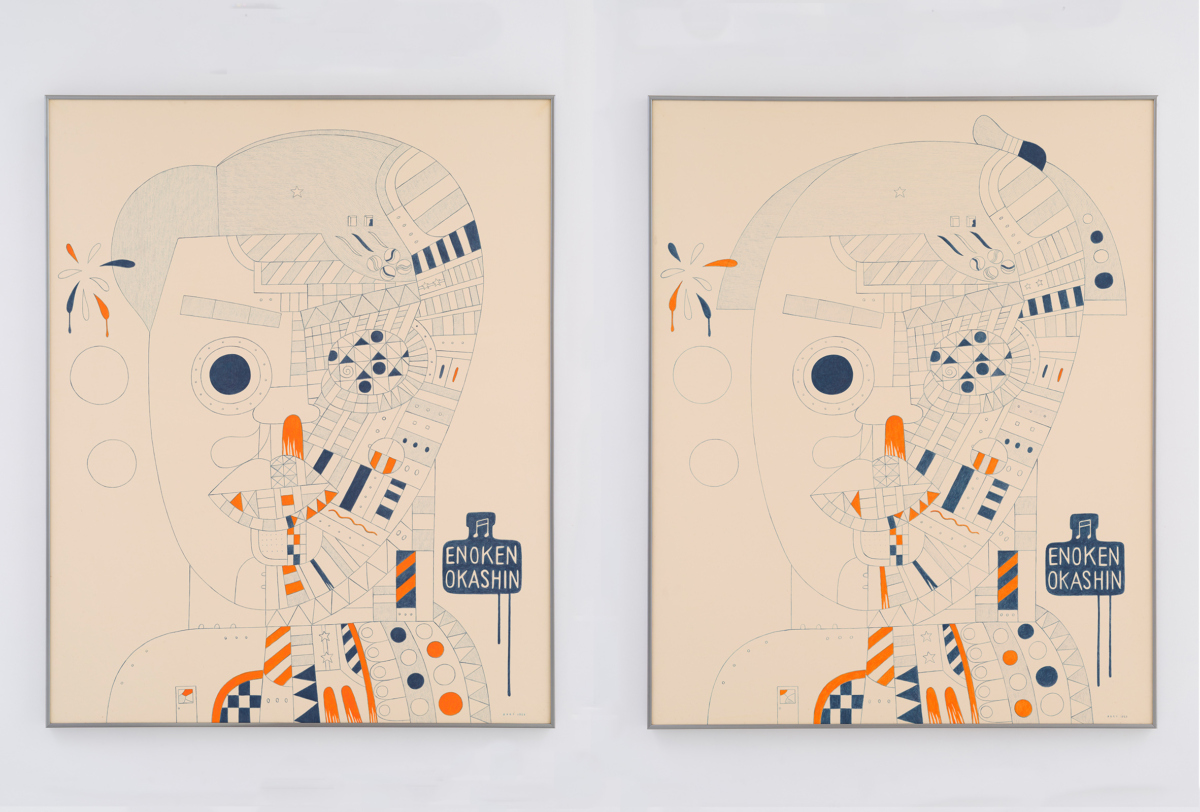
- Title
- Self-Portrait in the Guise of Enoken
- Year
- 1983
- Material
- Liquitex, canvas
- Size
- 162 x 130.3 cm
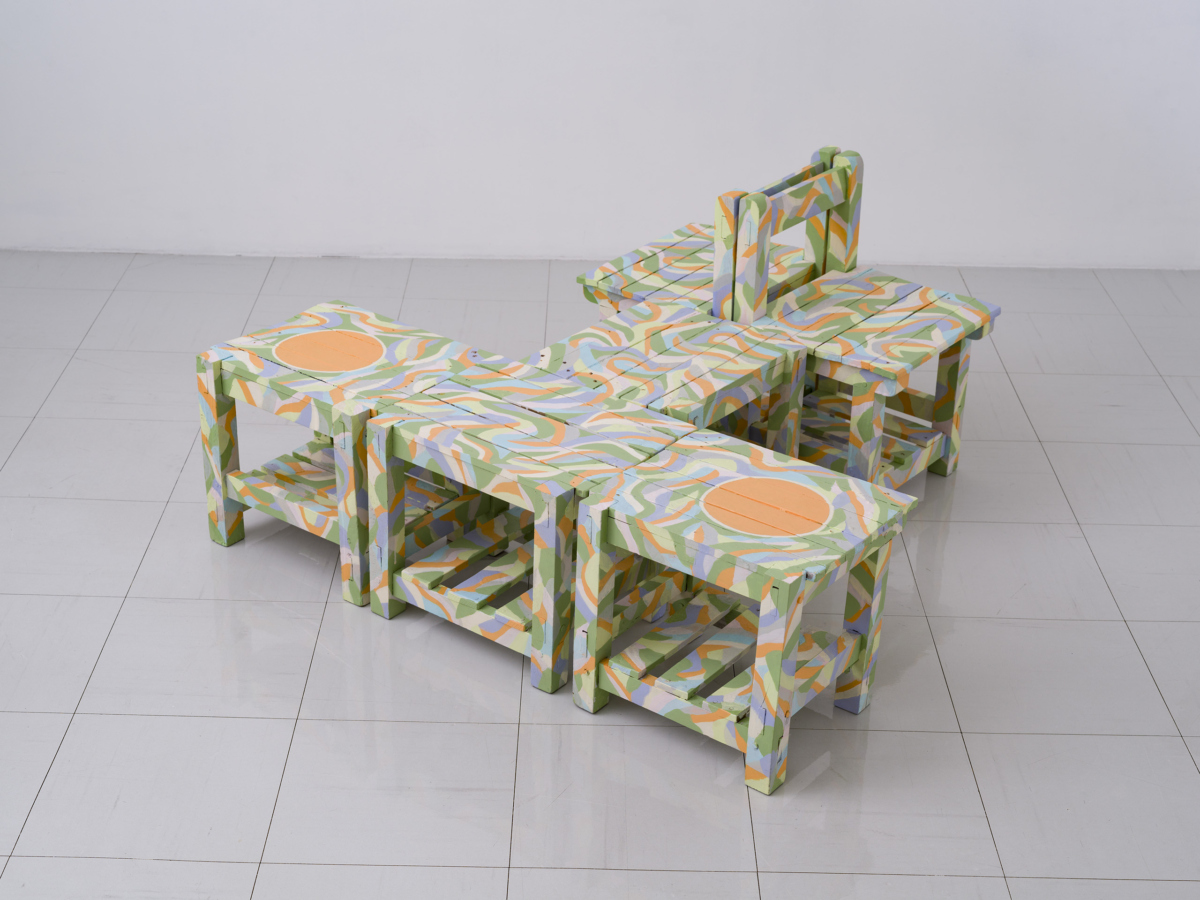
- Title
- Zero Fighter
- Year
- 1984
- Material
- Liquitex on wood
- Size
- Dimension variable
Shinjiro Okamoto
Shinjiro Okamoto (1933-2020) taught himself watercolor painting after graduating from the Tokyo Metropolitan Nihonbashi High School. In the 1960s, he established a style of painting composed of simple lines and bright acrylic paint colors. In 1962 and 1964, he received honorable mentions at the Shell Art Awards and, in 1964, the grand prize at the inaugural Nagaoka Contemporary Art Museum Awards. Since then, he has participated in numerous exhibitions in and out of Japan, including the Tokyo Biennale and the Contemporary Art Exhibition of Japan. In recent years, he has received growing international acclaim as an artist presenting an aspect of post-war Japan, as exemplified by his inclusion in the International Pop, an exhibition that situated Pop Art within an international context (which toured the Walker Art Center, Dallas Museum of Art, and Philadephia Museum of Art). His first exhibition at Tokyo Gallery, The World of Insects: Or the Scenery of Swarm, was held in 1966. In addition, he also worked as an Art Director at Toppan Printing Co., Ltd. Until 1981, where he excelled for his work in the field of design.
During his long career, Okamoto developed many series in different styles. His subjects range from pre-war popular culture to art, religion, and history. The works are based on meticulous sketches, and dispassionate brush strokes create lively forms across the image. One of the most striking aspects of Okashin’s [an abbreviation of OKAmoto SHINjiro] world is the way in which a single image is recreated in different variations of color and size using techniques such as lithographs, silk-screen, three-dimensional painting, and sculptural objects. These proliferating images transform the exhibition space to an overwhelming spectacle. The upbeat and festive pictorial spaces do indeed entertain the viewers, but at the same time do not pander to them, presenting a calmness akin to an eye of a storm.
